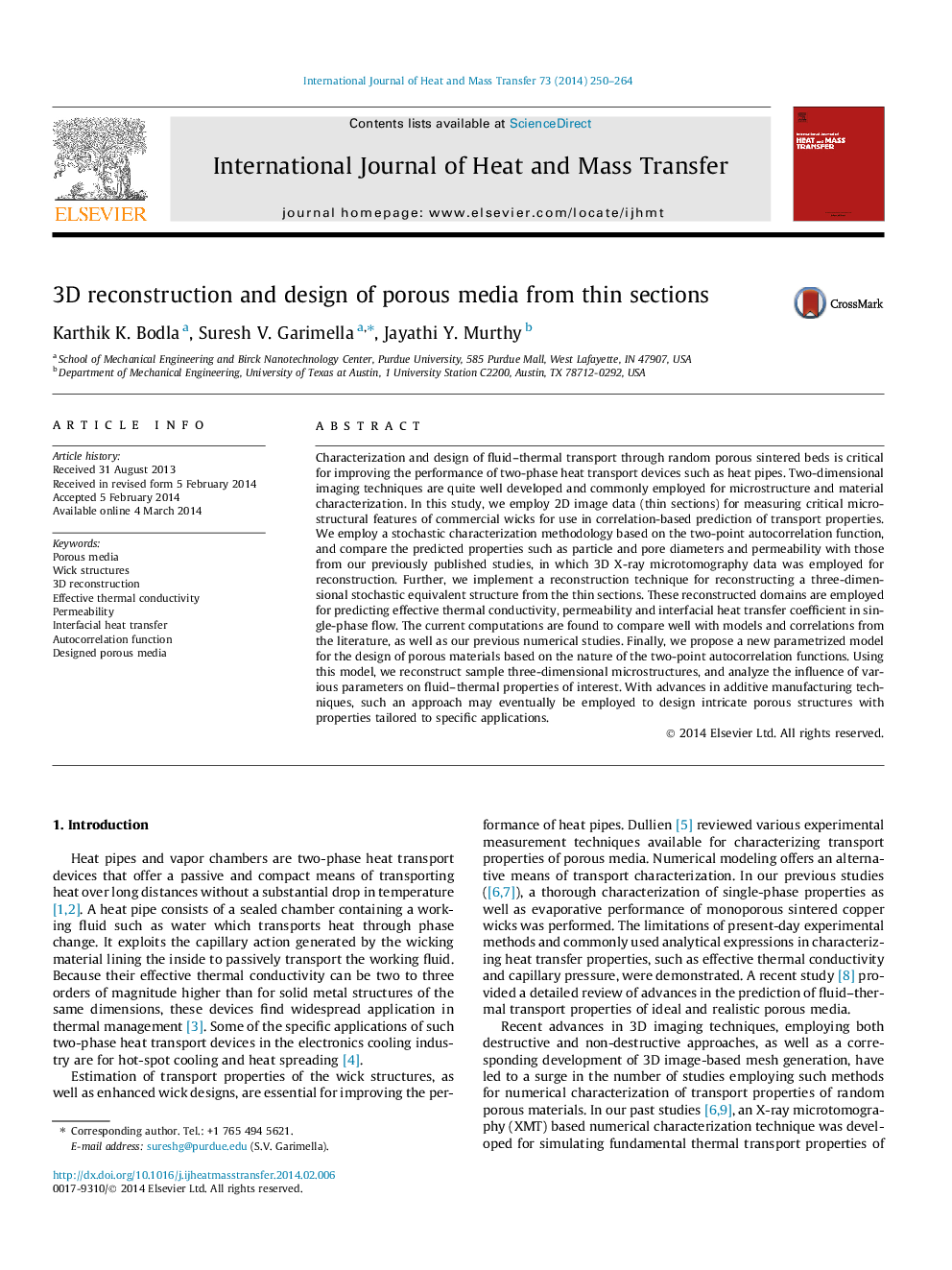| Article ID | Journal | Published Year | Pages | File Type |
|---|---|---|---|---|
| 657509 | International Journal of Heat and Mass Transfer | 2014 | 15 Pages |
Abstract
Characterization and design of fluid-thermal transport through random porous sintered beds is critical for improving the performance of two-phase heat transport devices such as heat pipes. Two-dimensional imaging techniques are quite well developed and commonly employed for microstructure and material characterization. In this study, we employ 2D image data (thin sections) for measuring critical microstructural features of commercial wicks for use in correlation-based prediction of transport properties. We employ a stochastic characterization methodology based on the two-point autocorrelation function, and compare the predicted properties such as particle and pore diameters and permeability with those from our previously published studies, in which 3D X-ray microtomography data was employed for reconstruction. Further, we implement a reconstruction technique for reconstructing a three-dimensional stochastic equivalent structure from the thin sections. These reconstructed domains are employed for predicting effective thermal conductivity, permeability and interfacial heat transfer coefficient in single-phase flow. The current computations are found to compare well with models and correlations from the literature, as well as our previous numerical studies. Finally, we propose a new parametrized model for the design of porous materials based on the nature of the two-point autocorrelation functions. Using this model, we reconstruct sample three-dimensional microstructures, and analyze the influence of various parameters on fluid-thermal properties of interest. With advances in additive manufacturing techniques, such an approach may eventually be employed to design intricate porous structures with properties tailored to specific applications.
Keywords
Related Topics
Physical Sciences and Engineering
Chemical Engineering
Fluid Flow and Transfer Processes
Authors
Karthik K. Bodla, Suresh V. Garimella, Jayathi Y. Murthy,
